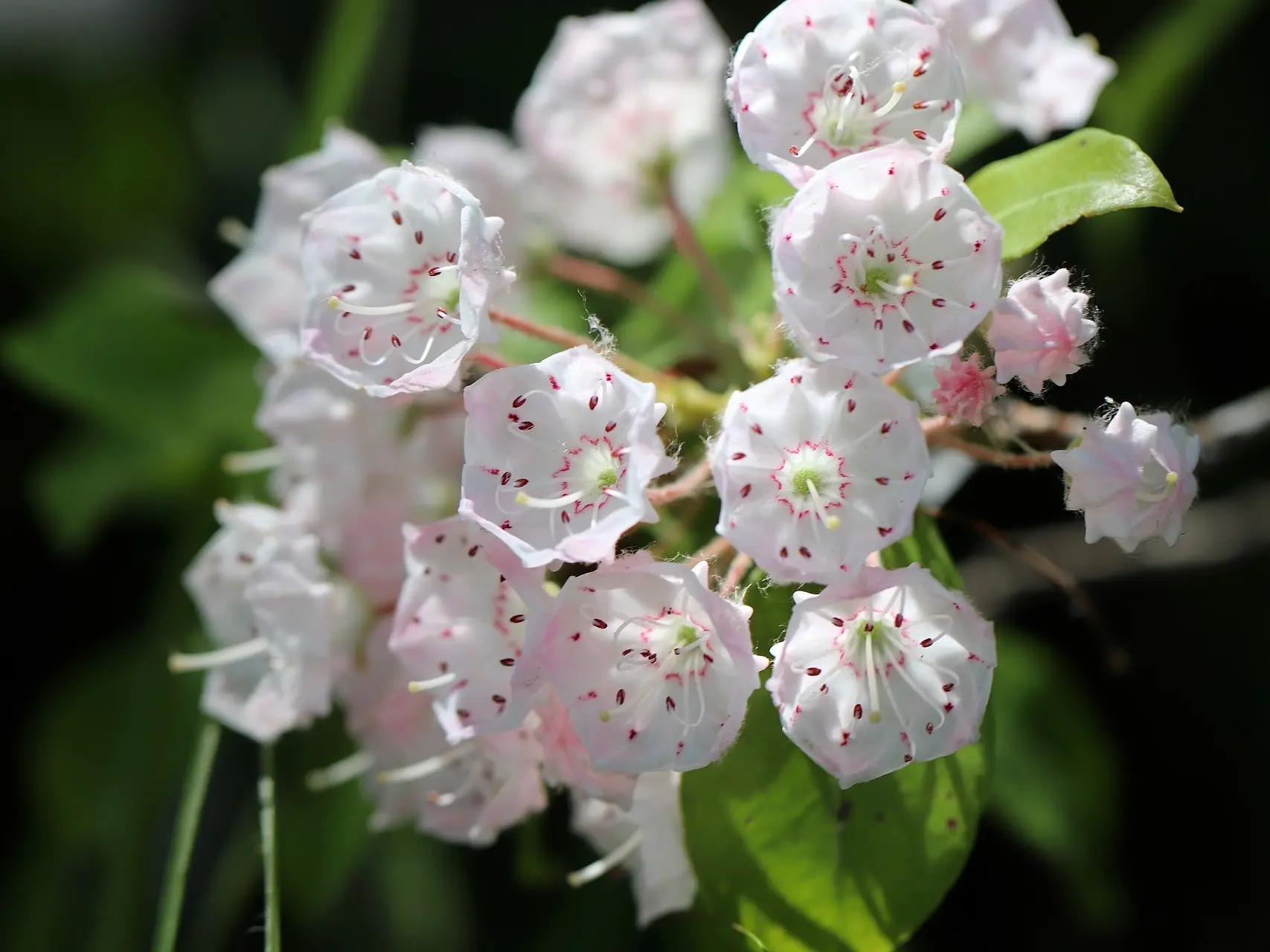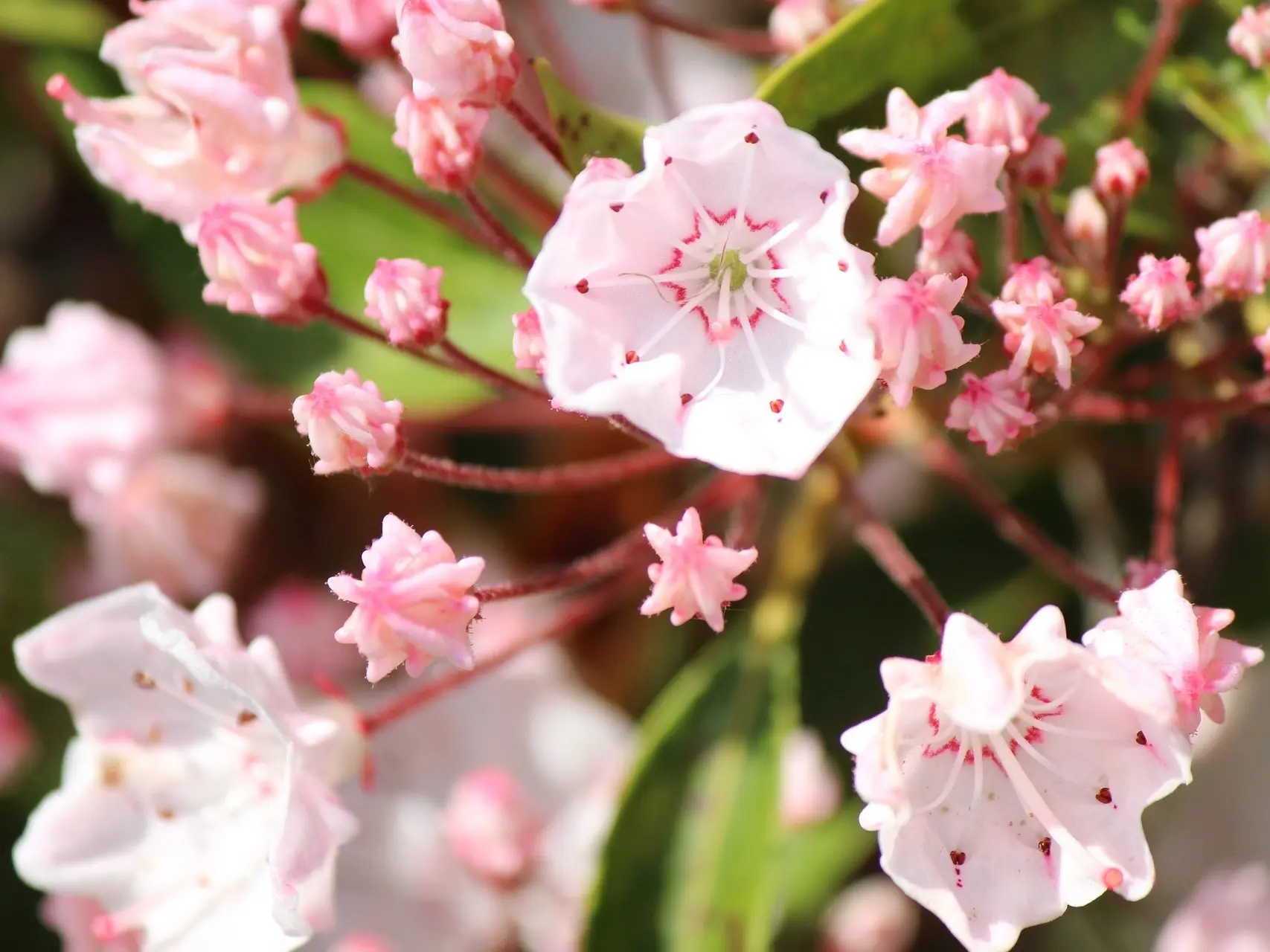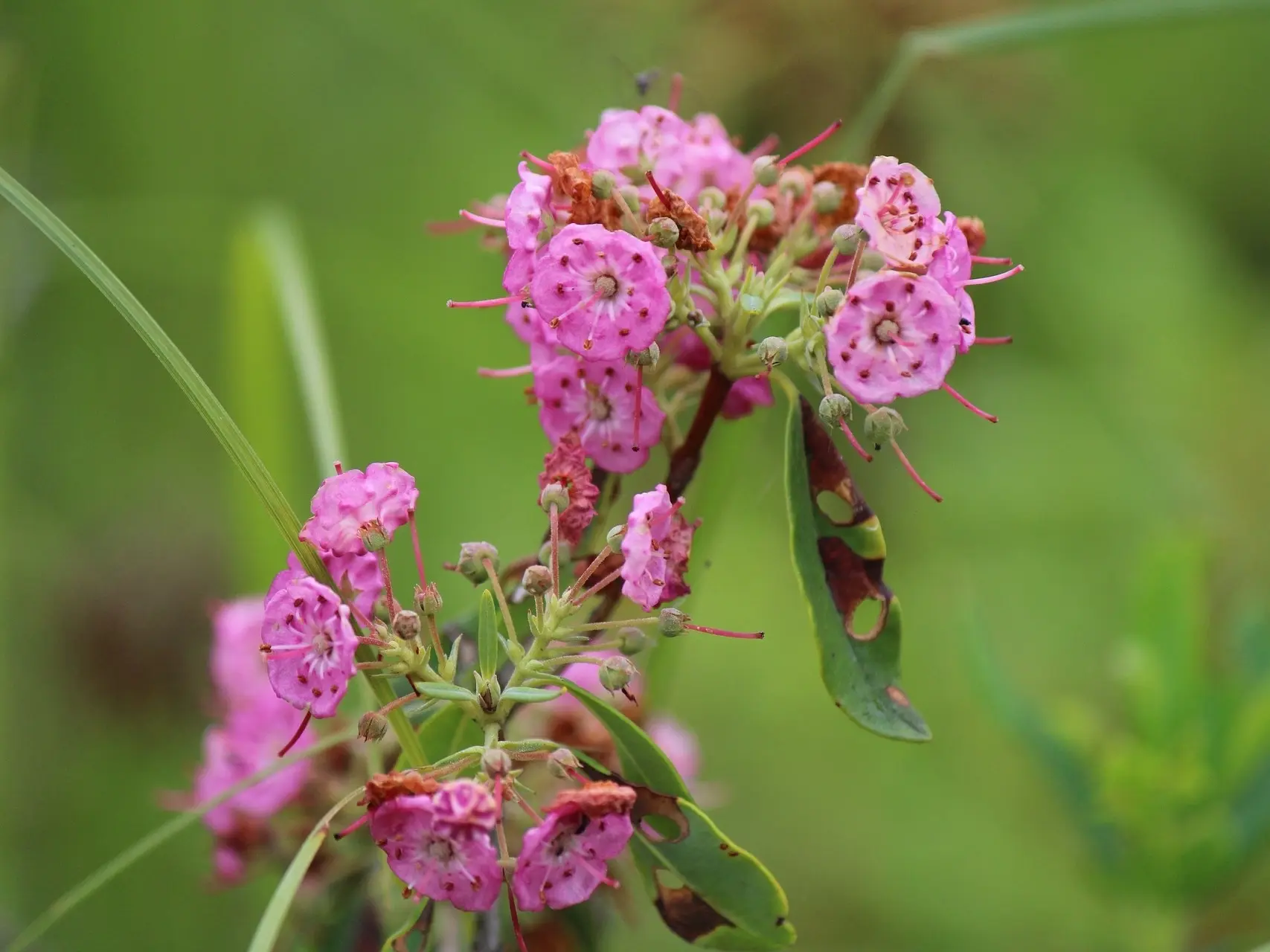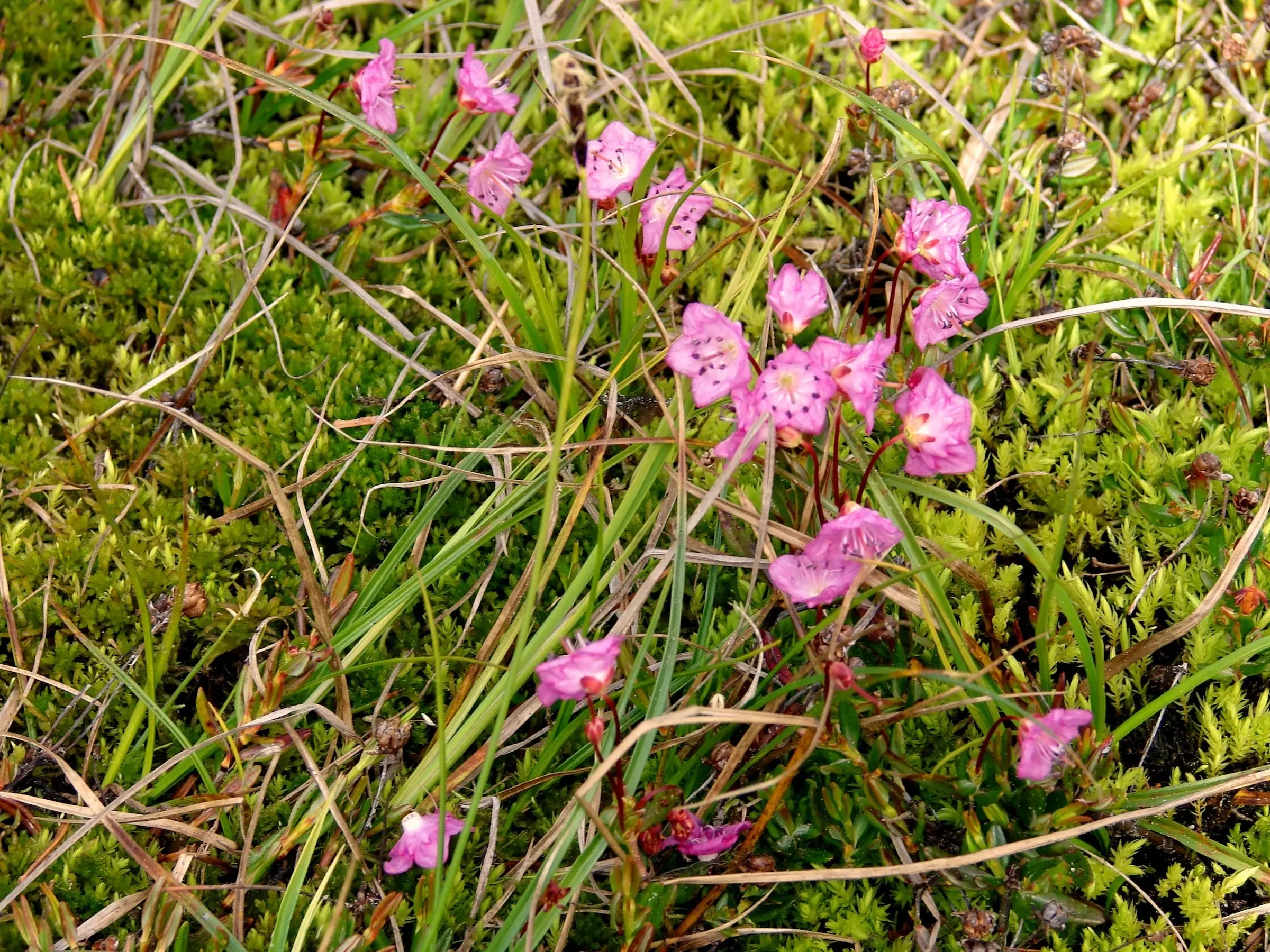
Names
Kalmia polifolia, Bog Laurel, Lambkill, Sheep Laurel, Sheep Poison, Mountain Laurel, Whitewicky, Pale Laurel
Description
Large shrub or tree with smooth, elliptical, alternate leaves that stay green all year in moderate climates. Flowers are white / pink / purple and grow in bunches on upper stems.

Concern Level
Only during drought conditions, unpalatable.
Toxic Parts
All parts of the plant are toxic, including the nectar (which can translate into dangerous honey).

Symptoms
Occur within a few hours of ingestion, excessuve salivation, loss of appetite, diarrhea, colic, depression, lack of coordination, leg paralysis, weakened heart rate.
Danger
Toxic principle interferes with both skeletal and cardial muscle and with nerve function. Can be fatal

More Information
*It should be noted that we are not veterinarians. This information is written specifically for horses and should be used for reference purposes only. If you think your horse has eaten something toxic call your vet right away.